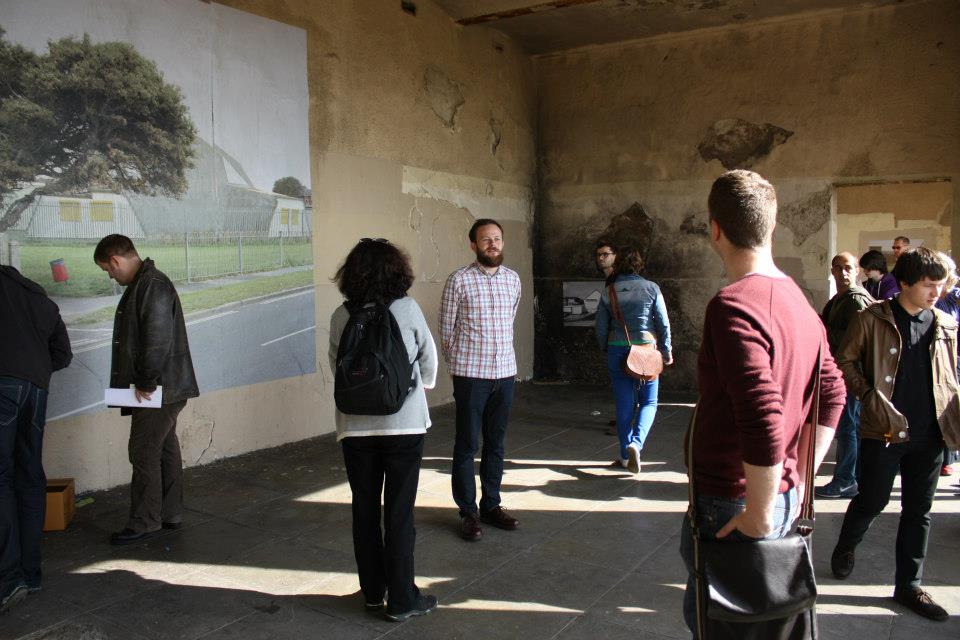As we embarked on the Bus Tour of the Four Versions of Three Routes installation sites last Sunday, I had a great feeling of anticipation.
I was interested to see how participants would interpret each installation site, how they would engage with the different areas of Brighton and finally how each installation had survived during the opening few days of the Biennial. As the tour progressed around each site, the answer to the latter question became clear – they hadn’t. In fact, by Sunday morning only one out of five installations still remained, most had disappeared with little trace.
Although vandalism, destruction and possible appropriation of the posters was expected at some point, it was a surprise to see that most of the posters had been removed with such efficiency. Inevitably this raised instinctive questions; who was responsible for removing the posters? How was there so little trace of them ever existing? Why did someone feel the need to spend time taking them down? How much role had the weather played in making the sites unstable? These questions are never going to be answered though and it is futile spending anymore time thinking about it. What is more pertinent is the effect this has on the project; without a physical outcome, does it have any function?
As with a number of Preston is my Paris projects, this was always a body of work that placed emphasis on process rather outcome. The initial concept of limiting the production process of the photographs to the constituency borders is a direct link to the overall theme of the Biennial, and the combination of installation sites in public space and the free map was then designed to encourage audiences to engage in their own process of experience. At one point in the initial development of the work, I even discussed the idea of publicising the project as having these installation sites, but not actually realising them. Instead audiences would be almost ‘tricked’ into visiting a non-existent installation and having to engage in their own process of interpretation once there.
Current circumstances have meant that this concept has actually become somewhat of a reality. In a similar scenario to some performance art, Four Versions of Three Routes is destined to only exist in the digital document photographs that we produced during the installation process. What was clear on the Bus Tour however was that even without the posters, each participant still engaged with the project. Some people took their own photographs, others discussed personal anecdotes and links to each site, some remarked about discovering somewhere they had never visited before even though it was just minutes away from the Biennial centre of Brighton.
If you want to see our project photographs then visit the more permanent structure in Bartholomew Square, get a copy of Photoworks 19 magazine or look at the document images online. But really, all you need to do is pick up a map and explore the constituencies, as it is all there anyway.
Published on 15 October 2012
Submitted by Adam Murray
Edited by Photoworks


